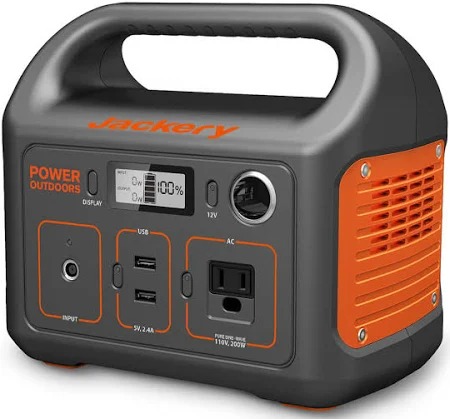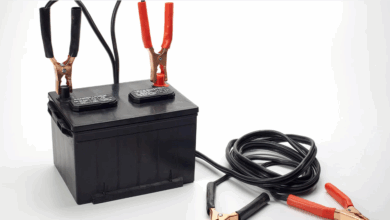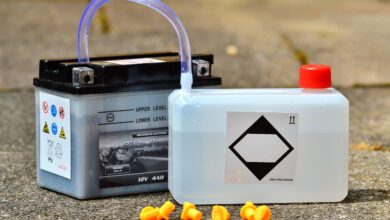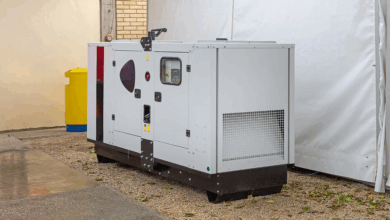Power Up Your Life: The Mighty Mini Generator Guide

Power Up Your Life: The Mighty Mini Generator Guide
In a world increasingly reliant on electricity, the thought of losing power can be unsettling. Whether facing a sudden outage, planning an off-grid adventure, or needing juice for a remote project, reliable power is non-negotiable. While large, bulky generators have long been the go-to for significant power needs, a more agile and versatile hero has emerged: the mighty mini generator.
These compact powerhouses offer a compelling blend of portability, convenience, and sufficient output for a surprising range of applications. Far from being mere novelties, mini generators can truly "power up" your life, providing peace of mind and expanding your possibilities. But what exactly are they, and how do you choose the right one for your needs? Let’s dive in.
What Exactly is a Mini Generator?
At its core, a generator converts mechanical energy (usually from burning fuel) into electrical energy. A "mini" generator refers to a smaller, more lightweight version designed for portability and powering less demanding electrical loads. Unlike their larger, often wheeled counterparts that can power entire homes or construction sites, mini generators are typically designed to be easily carried by one or two people and focus on providing power for a few essential appliances, electronics, or tools.
They usually operate on gasoline, though propane, dual-fuel (gasoline and propane), and even solar-powered versions (often called solar generators, which use batteries charged by solar panels) fall into the portable power category. The defining characteristics are their size, weight, and output, which typically ranges from a few hundred watts up to around 2,500-3,500 running watts.
Why Go Mini? The Mighty Benefits
The appeal of mini generators lies in their numerous advantages:
- Portability: This is the big one. Their compact size and lighter weight make them incredibly easy to transport. Throw one in the trunk for a camping trip, carry it to a remote worksite, or tuck it away in a garage until needed.
- Convenience: Starting and operating a mini generator is generally simpler than a large unit. Their smaller fuel tanks mean less fuel to store and carry.
- Cost-Effectiveness: Mini generators are significantly less expensive upfront than larger generators, making portable power accessible for smaller budgets. They also consume less fuel, leading to lower running costs for light loads.
- Lower Noise Levels (Often): Many mini generators, particularly inverter models (more on these later), are remarkably quiet compared to traditional generators, making them much more pleasant for recreational use, camping, or use in residential areas.
- Sufficient Power for Specific Needs: While they won’t run your central air conditioner, they can comfortably handle charging phones, laptops, running lights, small refrigerators, fans, power tools, and sensitive electronics.
- Easy Storage: Their small footprint means they don’t take up much space in a garage, shed, or RV compartment.
Where Can Mini Generators Power Your Life? Common Uses
The versatility of mini generators opens up a world of possibilities:
- Camping and RVing: Power lights, fans, coffee makers, charge devices, and run small portable heaters or air conditioners in your tent or RV.
- Tailgating and Outdoor Events: Keep the music playing, the slow cooker warm, or run a small TV for game day.
- Emergency Preparedness: During a power outage, run essential items like lights, a fan, charge communication devices, power a small refrigerator or freezer to save food, or run medical equipment like a CPAP machine (check wattage requirements carefully).
- Remote Work Sites: Power drills, saws, chargers, and other tools where grid power isn’t available.
- Backyard & Garden: Run hedge trimmers, string trimmers, or power washing pumps far from an outlet.
- Boating: Provide power for lights, radios, or charging devices while out on the water.
Types of Mini Generators: Inverter vs. Conventional
While there are variations in fuel type, the most significant distinction among mini generators is the type of power they produce and how they produce it:
- Conventional Generators: These use an engine that runs at a constant speed (usually 3600 RPM) to produce electricity. The output is raw AC power. They are generally less expensive and more robust for running simple tools or resistance loads (like lights or heaters) that aren’t sensitive to fluctuations. However, they are typically louder and produce "dirty" power that can potentially harm sensitive electronics like laptops, smartphones, or modern appliances with complex circuitry.
- Inverter Generators: This is where many mini generators truly shine. Inverter technology involves a more complex process. The engine runs at a variable speed depending on the power demand, producing AC power which is then converted to DC, and finally "inverted" back to clean, stable AC power. This results in:
- Clean Power: Ideal for sensitive electronics.
- Fuel Efficiency: The engine only works as hard as needed, saving fuel.
- Quieter Operation: Variable speed means the engine runs slower and quieter under light loads.
- Lighter Weight: Often lighter than conventional generators of similar output.
For most recreational, emergency, and home-backup use involving electronics, an inverter mini generator is the superior choice.
Choosing Your Mighty Mini: Key Factors to Consider
Selecting the right mini generator involves more than just picking the first one you see. Consider these factors:
- Power Output (Wattage): This is crucial. Generators have two wattage ratings:
- Running Watts (Rated Watts): The continuous power the generator can supply.
- Starting Watts (Surge Watts): The extra burst of power needed to start motor-driven appliances (refrigerators, power tools, air conditioners). Starting watts can be 2-3 times higher than running watts.
- How to calculate: List the items you want to run simultaneously. Find their running wattage (usually on a label). Add them up for the total running watts needed. Identify the item with the highest starting wattage. Add its starting wattage to the running watts of all other items. The generator’s starting wattage must meet or exceed this number. Example: Running a 600W coffee maker + 100W laptop + 80W fan + 1500W refrigerator (with a 4500W starting surge). You need at least 840W running (600+100+80+60). But you need a generator with at least 4500W starting power to handle the fridge compressor kick-on. Aim slightly higher than your minimum needs.
- Fuel Type and Runtime: Most use gasoline. Consider how easy it is to store and handle. Propane is cleaner and stores longer but offers slightly less power. Dual-fuel offers flexibility. Look at the generator’s runtime on a full tank at a specific load (e.g., 8 hours at 25% load).
- Noise Level: Measured in decibels (dB). Anything below 60 dB at 23 feet is considered relatively quiet (like a normal conversation). This is especially important for camping or use in noise-sensitive areas. Inverter generators usually excel here.
- Portability: Check the weight and dimensions. Does it have comfortable handles? Can one person lift it easily?
- Outlets and Features: Does it have the types and number of outlets you need (standard 120V AC, USB ports, 12V DC)? Does it have parallel capability (allowing you to link two identical generators for double the power)? Electric start is a convenient feature, though it adds cost and weight.
- Price: Set a budget, but balance cost with features, power needs, and brand reputation.
- Brand Reputation and Reviews: Research reliable brands known for quality, durability, and good customer support. Read reviews from other users.
Keeping the Power Flowing: Basic Maintenance
Like any engine-driven equipment, mini generators require basic maintenance to run reliably:
- Read the Manual: It’s your primary source for specific maintenance schedules and instructions.
- Oil Changes: Regularly change the oil according to the manufacturer’s recommendations, usually after the first few hours and then based on runtime.
- Fuel Management: Use fresh fuel. If storing the generator long-term, drain the fuel or use a fuel stabilizer to prevent carburetor issues.
- Air Filter: Check and clean or replace the air filter as needed.
- Spark Plug: Inspect and replace the spark plug periodically.
- Run It Periodically: Even if not needed, run the generator for 20-30 minutes every few months to keep the engine lubricated and ensure it starts when you do need it.
Safety First: Using Your Mini Generator Responsibly
Generator safety is paramount. Carbon monoxide poisoning is a serious risk.
- NEVER Run Indoors or in Enclosed Spaces: This includes garages, sheds, basements, or covered porches. Generators must always be operated outdoors, far from windows, doors, and vents to prevent carbon monoxide fumes from entering occupied buildings.
- Proper Ventilation: Ensure plenty of clear space around the generator for airflow.
- Fuel Handling: Refuel only when the generator is off and cool. Store fuel in approved containers away from living areas and ignition sources.
- Avoid Overloading: Don’t connect more appliances than the generator can handle. This can damage the generator and the appliances.
- Use Appropriate Extension Cords: Use heavy-duty outdoor-rated extension cords with sufficient gauge for the load and distance.
- Grounding: Follow the manufacturer’s instructions for grounding the generator, especially if connecting it to a transfer switch (though this is less common for mini generators powering individual items via cords).
FAQs: Your Mini Generator Questions Answered
- Q: What can a typical mini generator power?
- A: A common 2000-watt mini inverter generator can typically power lights, fans, chargers for phones/laptops, a small refrigerator, a TV, and potentially a microwave or coffee maker (though often not simultaneously). Always check appliance wattage.
- Q: How long can a mini generator run on a tank of fuel?
- A: This varies greatly depending on the tank size and the load (how many watts are being used). Many 2000-watt models can run for 4-8 hours at 25% to 50% load on a single tank.
- Q: Are mini generators noisy?
- A: It depends on the type. Conventional mini generators can be loud. Inverter mini generators are significantly quieter, often rated below 60 dB, comparable to a normal conversation from a distance.
- Q: Can I connect two mini generators together?
- A: Many inverter mini generators have "parallel capability." This allows you to connect two identical units with a special parallel kit to essentially double the available power output.
- Q: Are inverter generators worth the extra cost?
- Q: Can I use a mini generator to power my house during an outage?
- A: Not typically for a whole house. Mini generators are designed for essential items connected via extension cords. Powering a house requires a larger generator, a transfer switch installed by a qualified electrician, and careful planning to avoid backfeeding power into the grid (which is extremely dangerous).
- Q: How do I store a mini generator?
Conclusion
Mini generators are more than just backup power; they are enablers of freedom and preparedness. They unlock the ability to enjoy modern conveniences in remote locations, provide crucial support during emergencies, and add flexibility to your projects and leisure activities. By understanding their capabilities, choosing the right model for your needs, and adhering to basic maintenance and safety practices, you can harness the power of these compact units to truly "power up" your life, bringing convenience, comfort, and peace of mind wherever you go. Don’t underestimate the mighty mini – it might be the perfect portable power solution you’ve been looking for.




![How to Bypass CO Sensor on Generator – [4-Step Safety Guide]](https://www.generator411.com/wp-content/uploads/2025/08/co-sensor-on-generator-390x220.png)